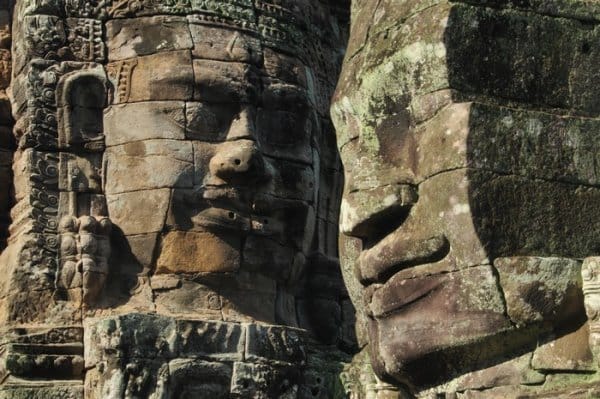Built in the late twelfth or early thirteenth century, the Bayon was intended to embrace all the religions of the kingdom, including the Islamic beliefs of the newly conquered Cham, but was consecrated as a Buddhist temple; when the state religion reverted to Hinduism, the Buddha in the central sanctuary was torn down and cast into the well beneath. As you approach from the south, all you can initially see down the avenue is a mass of ill-defined stone, dark and imposing. It’s only after crossing the stone causeway that the intricacy of the Bayon’s design becomes apparent, and you begin to make out the 37 towers with their massive faces of Lokesvara. It is said that there are more than two hundred in all; exactly why they are repeated so many times remains unclear.
Across the causeway, a few steps lead up to the third enclosing wall, a colonnaded gallery whose roof has long since collapsed. Its outer walls bear the first of the temple’s bas-reliefs, deeper and less fine than those at Angkor Wat (and some are unfinished). Having viewed these, most people follow the passage from the middle of the south gallery to reach the bas-reliefs of the second enclosing wall, raised up about 1.5m above the level of the third enclosure. These carvings aren’t in great condition, however, so if you’re tired of studying yet more multi-armed gods you might as well look out just for those specimens we point out.
A highlight of any visit is to arrive at the Bayon by elephant ($10–15); elephants wait at the stand by the southern causeway from 7.30am to 10.30am (in the afternoon they’re at Phnom Bakheng). Arriving by car, tuk-tuk or moto, you’ll be dropped at the main approach to the Bayon at the east, and your driver will go to the parking area near the Terrace of the Leper King about a kilometre to the north to wait for you while you visit the Bayon, Baphuon, Phimeanakas and the terraces; make sure to know exactly where he is waiting, as once you’re there it’s a mass of identical transport. Most people visit in the morning, when the light is at its best, but the light on the faces of the upper terrace can also be rewarding in the late afternoon and it’s quieter then too.







